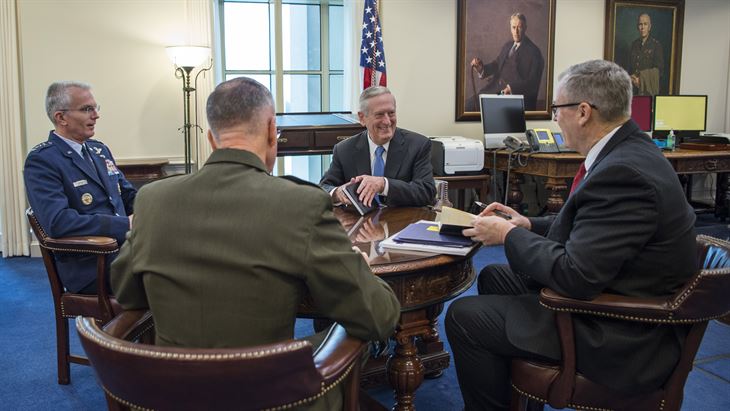US Air Power: The Imperative For Modernization (Buy The F-35)
Posted on
In 2006, a relatively obscure book caused a major stir among the U.S. Air Force leadership. Why Air Forces Fail, edited by Robin Higham and Stephen J. Harris, lays out the determinants of failure: deficiencies in the industrial base, misguided technology and tactical picks, inattention to logistics and neglect of training. The case studies are broken… Keep reading →
Up the Buy ASAP: Fixing American Airpower
Posted on
Double the buy rate on F-35A starting in 2020 and plan on a minimum of 200 B-21 bombers built in rapid fashion. That will begin to get to the Air Force that America needs to meets the challenges of the future.
HASC Seapower Chair Wittman Presses For Hypersonic Focus
Posted on
For years, the Pentagon has dreamed and worked to build what it has called Prompt Global Strike, The idea is simple: to build a hypersonic weapon that can destroy targets anywhere on earth within an hour of getting targeting data and permission to launch. The technology and the physics are not simple; nor are they cheap.… Keep reading →
AF Budget: JSTARS Recap Finally Killed; B1, B-2 Bombers Will Be Too
Posted on
PENTAGON: The Air Force was eclipsed as the biggest budget winner this year, partially because of its decision to begin shifting from current weapons to new ones. The Army, which has greatly increased its commitment to land weapons, increased 14.9 percent and the Air Force is up 14.1 percent. Meanwhile the Navy Department — which includes… Keep reading →
10 Reasons The US Should Build New Nuclear Missiles, GBSD
Posted on
CORRECTED: Minuteman Was First Solid-Fueled ICBM; Jon Wolfsthal’s name The first solid-fueled InterContinental Ballistic Missile, Minuteman 1, was deployed some 55 years ago on the same day that President Kennedy announced that Soviet missiles were being deployed in Cuba. At the end of the Cuban missile crisis, President Kennedy credited the newly deployed Minuteman ICBM as his “ace… Keep reading →
Boost The US Bomber Force: Dollars vs. Operational Needs
Posted on
The United States Air Force should consider shifting its balance of its strike forces from fighters to long-range bombers. At the end of the Cold War, the Air Force’s combat aircraft inventory included 411 bombers. Today, it has a total of 158 B-1, B-52, and B-2 bombers, of which only 96 are designated as Primary… Keep reading →
Why America Needs A Nuclear Air Launched Cruise Missile
Posted on
UPDATED: We Run Op-Ed; Pentagon Announces LRSO Contract The Pentagon just awarded the third major contract in the modernization of the nuclear triad. First came the B-21 bomber. Then the Columbia-class submarine, to replace the Ohio class boomers. Two days ago they awarded Boeing and Northrop Grumman contracts to begin work on the new version… Keep reading →
Korean War 2.0? The Signs To Watch
Posted on
After threatening to rain four missiles around Guam, North Korea’s pudgy leader, Kim Jong-un appeared to back off today. The (spoof) official North Korean News Agency issued a fabulous tweet describing it, declaring: “Esteemed General Kim Jong-Un reprieves US colony of Guam, citing concern for ocelots and sea turtles. Fate of Los Angeles remains unclear.”… Keep reading →
Long-Range Strike: ‘More Potent,’ More Survivable & Cheaper
Posted on
On January 19, the Air Force struck Libya to halt terrorist activity using B-2 stealth bombers. This was not the first strike against Libya. A mix of U.S. Air Force and U.S. Navy fighters conducted strikes 30 years ago against Libya in response to terrorist acts in Europe. A comparison of the two raids illustrates the… Keep reading →
Why Mattis Should Support Long Range Stand-Off Nuclear Cruise Missile
Posted on
During his Senate confirmation hearing, Defense Secretary James Mattis expressed doubts over plans to buy the nuclear Long Range Stand-Off cruise missile (LRSO). “I need to look at that one.” Mattis said, “My going in position is that it makes sense, but I have to look at it in terms of its deterrence capability.” While Mattis should take… Keep reading →









